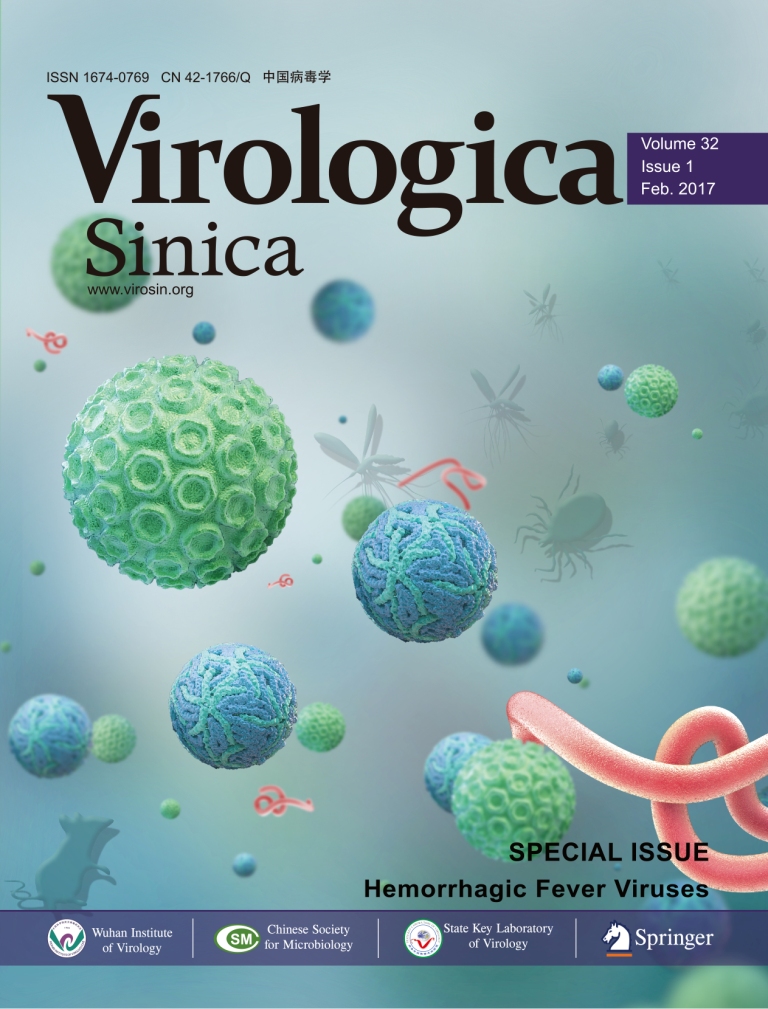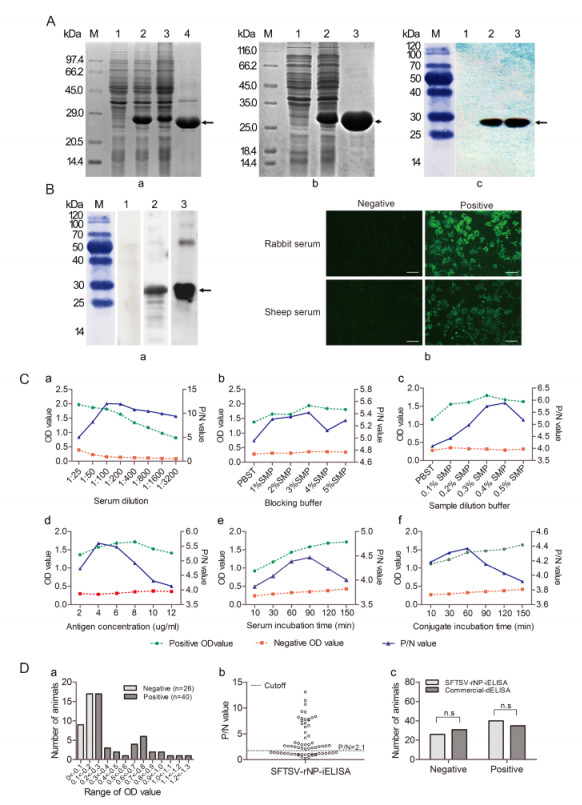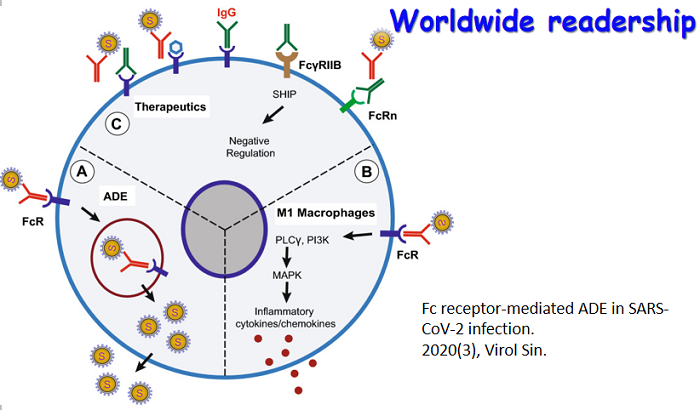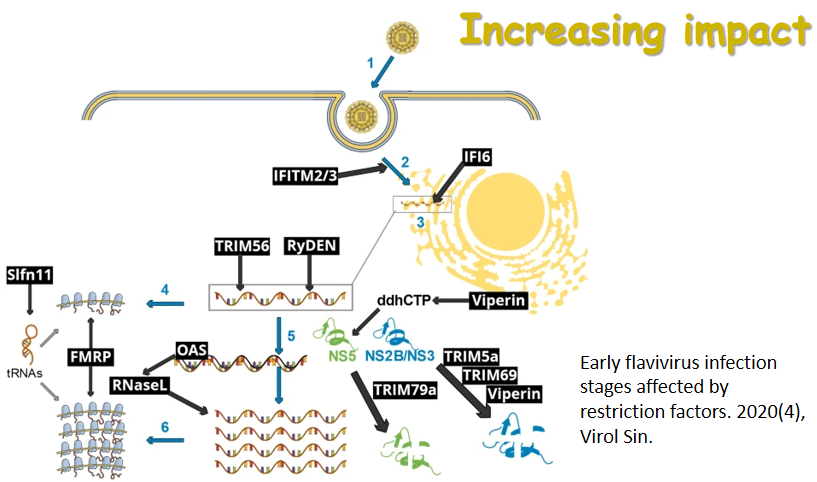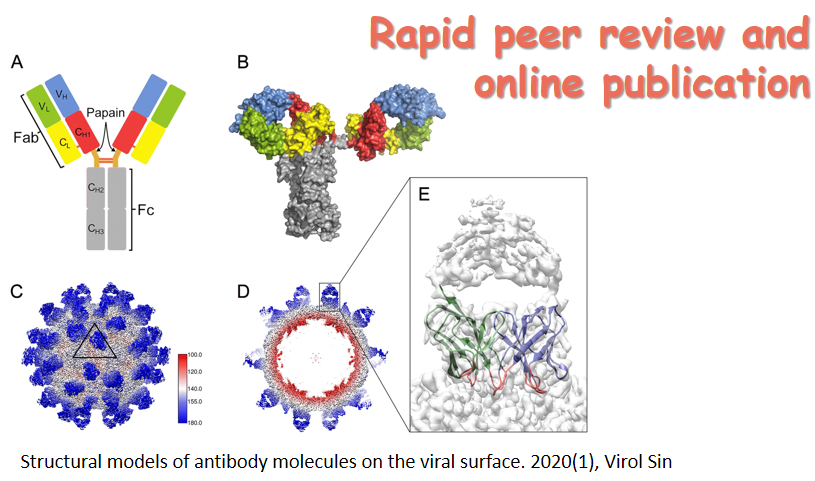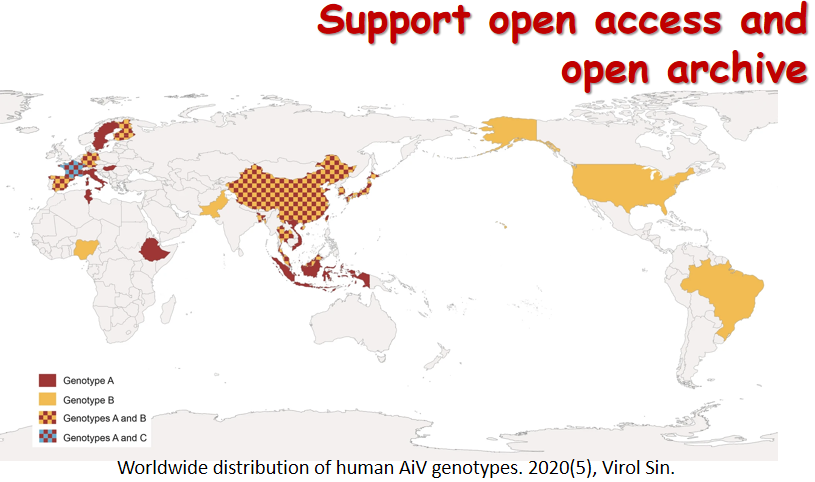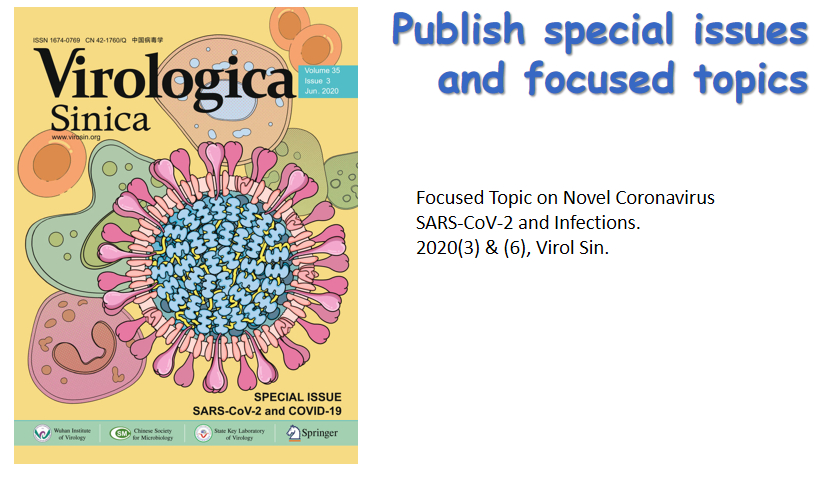Viral hemorrhagic fevers are caused by several distinct families of RNA and DNA viruses that can cause devastating disease in humans and other animals. Hemorrhagic fever viruses usually reside in animal or arthropod hosts and transmit to humans, resulting in human outbreak. Four major families of HFVs are Arenaviridae, Filoviridae, Bunyaviridae, and Flaviviridae. This special Issue presents the recent progress on Ebola virus, dengue virus, hantavirus, Crimean-Congo hemorrhagic fever virus, severe fever with thrombocytopenia syndrome virus, and covers topics on viral epidemiology, viral pathogenesis, and virus-host cell interaction of those hemorrhagic fever viruses. The cover depicts the hemorrhagic fever viruses and their major hosts.
-
Dear Editor, Severe fever with thrombocytopenia syndrome virus (SFTSV) is a newly identified viral pathogen of the genus Phlebovirus in the family Bunyaviridae (Sun et al., 2012). SFTSV was first identified from patient serum samples in China (Li et al., 2013; Ning et al., 2015).
-
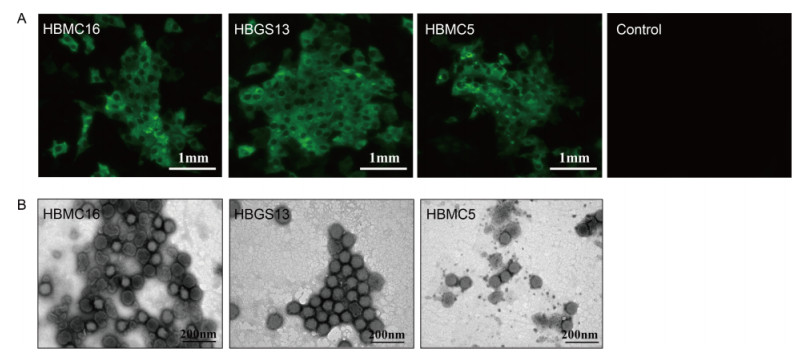
Isolation, characterization, and phylogenic analysis of three new severe fever with thrombocytopenia syndrome bunyavirus strains derived from Hubei Province, China
2017, 32(1): 89 doi: 10.1007/s12250-017-3953-3
Received: 06 February 2017 Accepted: 20 February 2017 Published: 24 February 2017Hubei Province is a major epidemic area of severe fever with thrombocytopenia syndrome bunyavirus (SFTSV) in China. However, to date, a few SFTSV strains have been isolated from Hubei Province, preventing effective studies of epidemic outbreaks. Here, we report three confirmed patients (2015-2016) with typical symptoms of severe fever with thrombocytopenia syndrome disease (SFTS) who were farmers resident in different regions in Hubei Province. Three new SFTSV strains were isolated from the serum samples of each patient. Characterization of viral growth properties showed that there were no significant differences in virus production. All strains were completely sequenced, and phylogenetic analysis showed that unlike the other strains from Hubei province, which belonged to the SFTSV C3 genotype, one of the three strains belonged to the SFTSV C2 genotype. These results suggested that multiple SFTSV genotypes have been circulating in Hubei Province, providing insights into SFTSV evolution and improving our understanding of SFTSV prevalence in Hubei Province. -
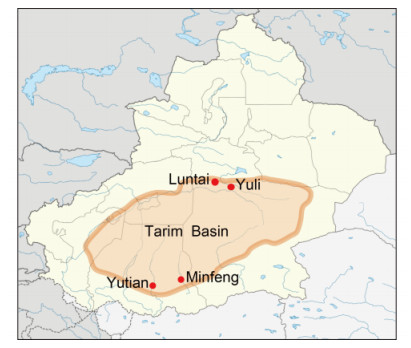
A new strain of Crimean-Congo hemorrhagic fever virus isolated from Xinjiang, China
2017, 32(1): 80 doi: 10.1007/s12250-016-3936-9
Received: 21 December 2016 Accepted: 20 February 2017 Published: 27 February 2017Crimean-Congo hemorrhagic fever virus (CCHFV) is a highly pathogenic tick-borne virus with a fatality rate of up to 50% in humans. CCHFV is widely distributed in countries around the world. Outbreaks of CCHFV infection in humans have occurred in prior years in Xinjiang Province, China. Epidemiological surveys have detected CCHFV RNA in ticks and animals; however, few isolates were identified. In this study, we identified and isolated a new CCHFV strain from Hyalomma asiaticum asiaticum ticks collected from north of Tarim Basin in Xinjiang, China. A preliminary investigation of infection and antigens expression of CCHFV was performed in newborn mice. The target tissues for CCHFV replication in newborn mice were identified. The analysis of the phylogenetic relationships with other Chinese strains suggested that diverse genotypes of CCHFV have circulated in Xinjiang for years. These findings provide important insights into our understanding of CCHFV infection and evolution as well as disease prevention and control for local residents. -
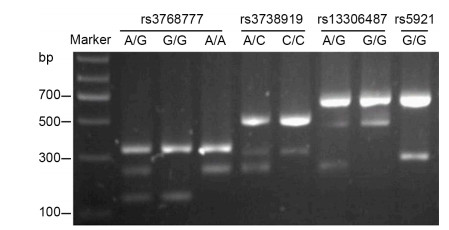
Lack of association between integrin αvβ3 gene polymorphisms and hemorrhagic fever with renal syndrome in Han Chinese from Hubei, China
2017, 32(1): 73 doi: 10.1007/s12250-016-3888-0
Received: 09 October 2016 Accepted: 04 January 2017 Published: 18 October 2016Hantaviruses belong to the family Bunyaviridae and cause hemorrhagic fever with renal syndrome (HFRS) in humans. β3 integrins, including αVβ3 and αIIbβ3 integrins, act as receptors on endothelial cells and play key roles in cellular entry during the pathogenesis of hantaviruses. Previous study demonstrated that the polymorphisms of integrin αIIbβ3 are associated with susceptibility to hantavirus infection and the disease severity of HFRS in Shaanxi Province of China, rather than in Finland. However, the polymorphisms of integrin αvβ3 in patients with HFRS was incompletely understood. Here, we aimed to investigate the associations between polymorphisms in human integrin αvβ3 and HFRS in Han Chinese individuals. Ninety patients with HFRS and 101 healthy controls were enrolled in this study. Analysis of five single nucleotide polymorphism (SNP) sites (rs3768777 and rs3738919 on ITGAV; rs13306487, rs5921, and rs5918 on ITGB3) was performed by TaqMan SNP genotyping assays and bi-directional PCR allele-specific amplification method. No significant differences were observed between the HFRS group and controls regarding the genotype and allele frequency distributions of any of the five SNP sites, and no associations were found between ITGAV polymorphisms/genotypes and disease severity. In conclusion, our results implied that these five SNPs in the integrin αvβ3 gene were not associated with HFRS susceptibility or severity in Han Chinese individuals in Hubei Province. -
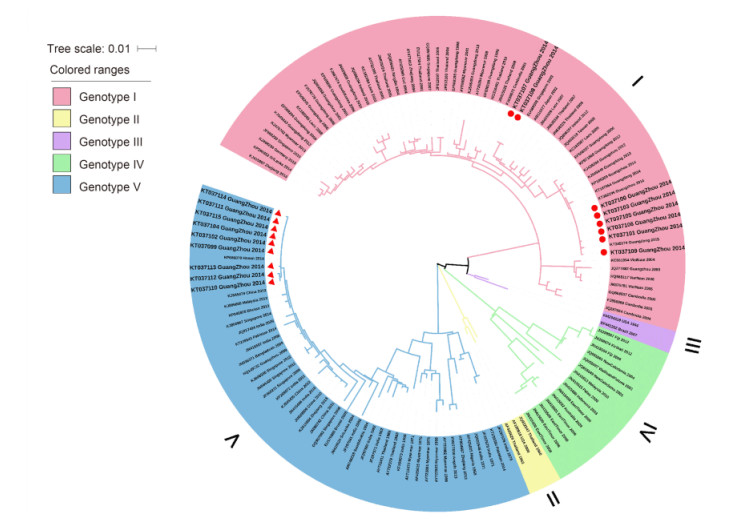
Molecular epidemiology demonstrates that imported and local strains circulated during the 2014 dengue outbreak in Guangzhou, China
2017, 32(1): 63 doi: 10.1007/s12250-016-3872-8
Received: 18 September 2016 Accepted: 15 November 2016 Published: 23 January 2017The dengue virus (DENV) is a vital global public health issue. The 2014 dengue epidemic in Guangzhou, China, caused approximately 40,000 cases of infection and five deaths. We carried out a comprehensive investigation aimed at identifying the transmission sources in this dengue epidemic. To analyze the phylogenetics of the 2014 dengue strains, the envelope (E) gene sequences from 17 viral strains isolated from 168 dengue patient serum samples were sequenced and a phylogenetic tree was reconstructed. All 17 strains were serotype I strains, including 8 genotype I and 9 genotype V strains. Additionally, 6 genotype I strains that were probably introduced to China from Thailand before 2009 were widely transmitted in the 2013 and 2014 epidemics, and they continued to circulate until 2015, with one affinis strain being found in Singapore. The other 2 genotype I strains were introduced from the Malaya Peninsula in 2014. The transmission source of the 9 genotype V strains was from Malaysia in 2014. DENVs of different serotypes and genotypes co-circulated in the 2014 dengue outbreak in Guangzhou. Moreover, not only had DENV been imported to Guangzhou, but it had also been gradually exported, as the viruses exhibited an enzootic transmission cycle in Guangzhou. -
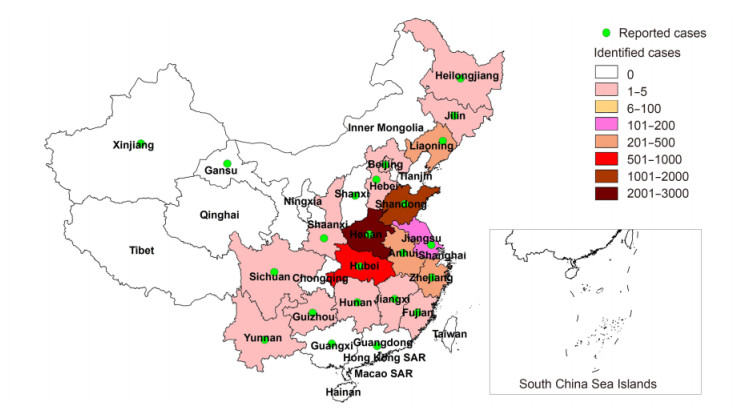
Current status of severe fever with thrombocytopenia syndrome in China
2017, 32(1): 51 doi: 10.1007/s12250-016-3931-1
Received: 12 December 2016 Accepted: 20 February 2017 Published: 27 February 2017Severe fever with thrombocytopenia syndrome (SFTS) is an emerging infectious disease caused by SFTS virus (SFTSV). SFTSV is associated with a high mortality rate and has been reported in China, South Korea and Japan. SFTSV undergoes rapid changes owing to evolution, gene mutations, and reassortment between different strains of SFTSV. In this review, we summarize the recent cases and general properties of SFTS, focusing on the epidemiology, genetic diversity, clinical features, and diagnostics of SFTSV in China. From 2010 to October 2016, SFTS cases were reported in 23 provinces of China, with increased numbers yearly. Infection and death cases are mainly found in central China, where the Haemaphysalis longicornis ticks are spread. The national average mortality rate of SFTS infection was 5.3%, with higher risk to elder people. The main epidemic period was from May to July, with a peak in May. Thus, SFTS reminds a significant public health problem, and development of prophylactic vaccines and effective antiviral drugs will be highly needed. -
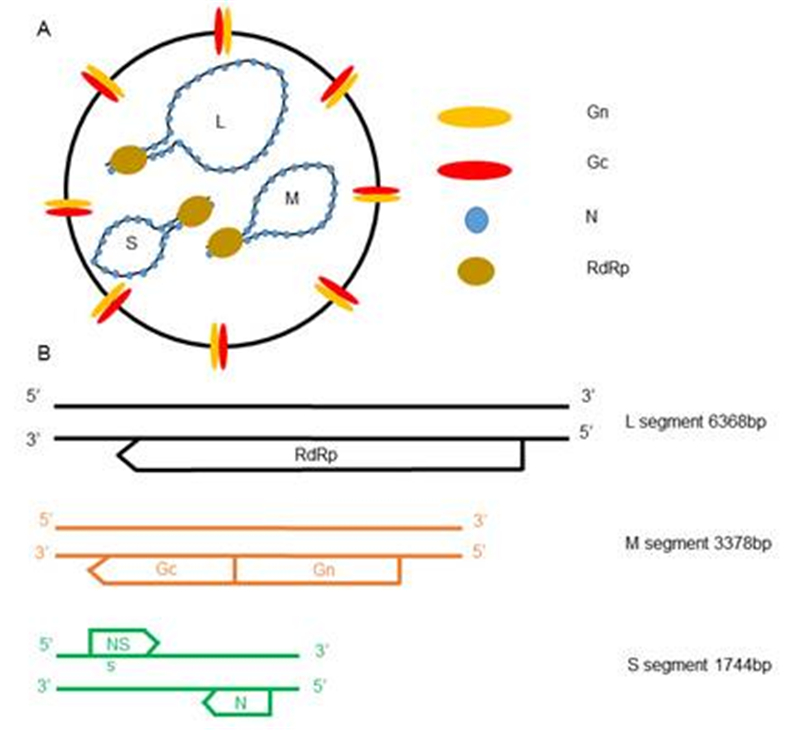
Entry of severe fever with thrombocytopenia syndrome virus
2017, 32(1): 44 doi: 10.1007/s12250-016-3858-6
Received: 28 August 2016 Accepted: 30 November 2016 Published: 16 December 2016Severe fever with thrombocytopenia syndrome virus (SFTSV) is a globe-shaped virus covered by a dense icosahedral array of glycoproteins Gn/Gc that mediate the attachment of the virus to host cells and the fusion of viral and cellular membranes. Several membrane factors are involved in virus entry, including C-type lectins and nonmuscle myosin heavy chain IIA. The post-fusion crystal structure of the Gc protein suggests that it is a class II membrane fusion protein, similar to the E/E1 protein of flaviviruses and alphaviruses. The virus particles are internalized into host cell endosomes through the clathrin-dependent pathway, where the low pH activates the fusion of the virus with the cell membrane. With information from studies on other bunyaviruses, herein we will review our knowledge of the entry process of SFTSV. -
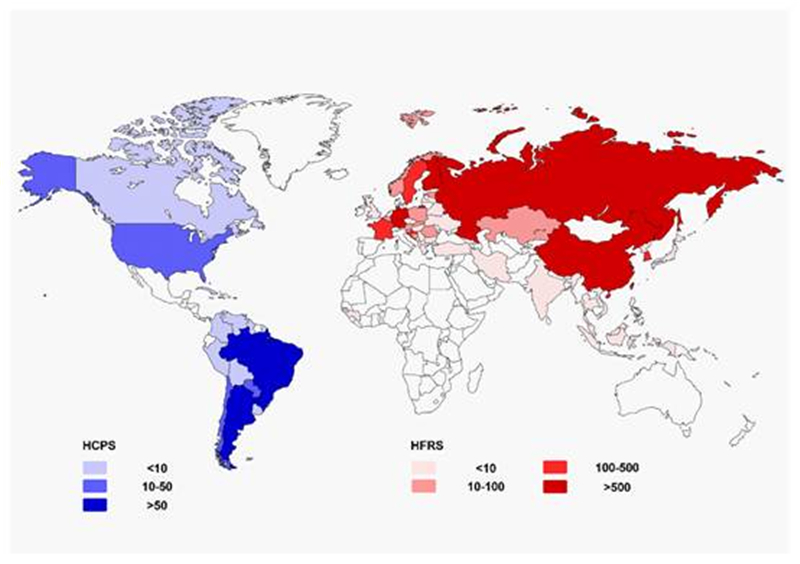
Hantavirus infection: a global zoonotic challenge
2017, 32(1): 32 doi: 10.1007/s12250-016-3899-x
Received: 28 October 2016 Accepted: 05 January 2017 Published: 13 January 2017Hantaviruses are comprised of tri-segmented negative sense single-stranded RNA, and are members of the Bunyaviridae family. Hantaviruses are distributed worldwide and are important zoonotic pathogens that can have severe adverse effects in humans. They are naturally maintained in specific reservoir hosts without inducing symptomatic infection. In humans, however, hantaviruses often cause two acute febrile diseases, hemorrhagic fever with renal syndrome (HFRS) and hantavirus cardiopulmonary syndrome (HCPS). In this paper, we review the epidemiology and epizootiology of hantavirus infections worldwide. -
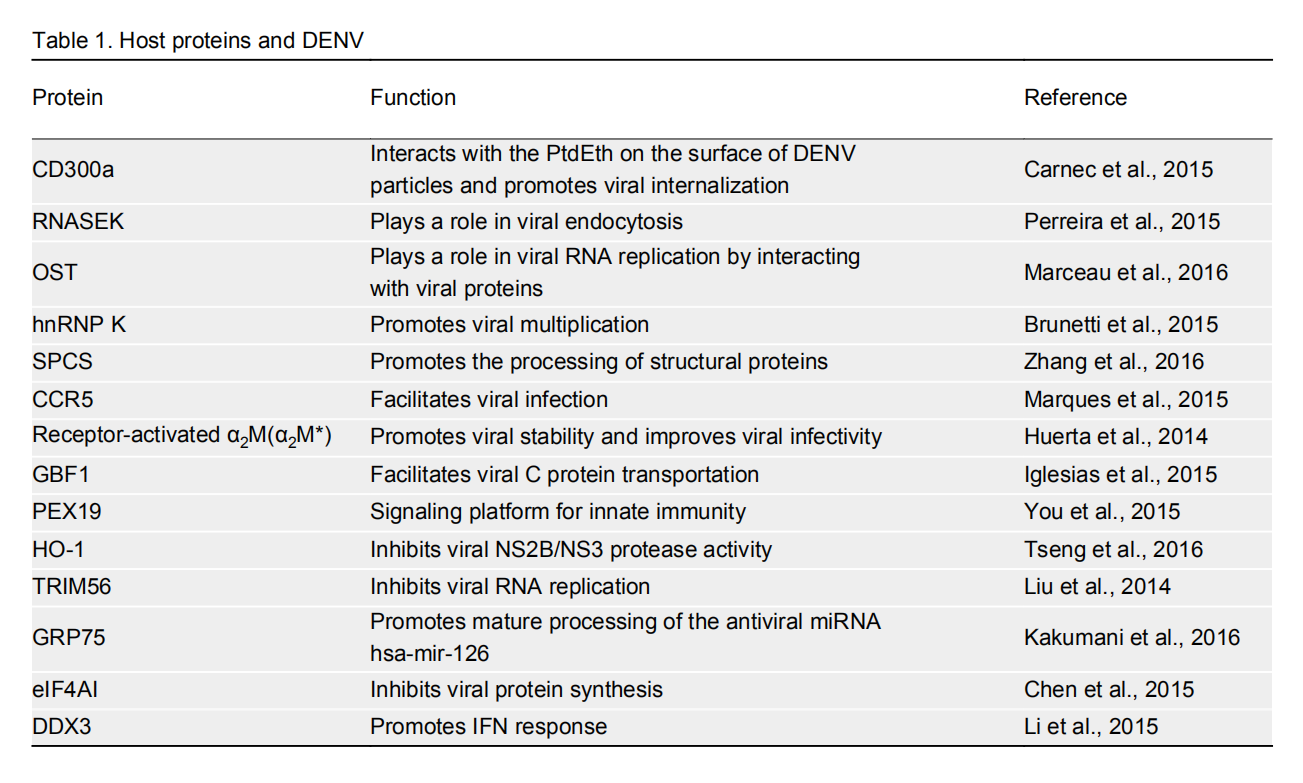
Recent advances in the identification of the host factors involved in dengue virus replication
2017, 32(1): 23 doi: 10.1007/s12250-016-3902-6
Received: 03 November 2016 Accepted: 04 January 2017 Published: 24 January 2017Dengue virus (DENV) belongs to the genus Flavivirus of the family Flaviviridae and it is primarily transmitted via Aedes aegypti and Aedes albopictus mosquitoes. The life cycle of DENV includes attachment, endocytosis, protein translation, RNA synthesis, assembly, egress, and maturation. Recent researches have indicated that a variety of host factors, including cellular proteins and microRNAs, positively or negatively regulate the DENV replication process. This review summarizes the latest findings (from 2014 to 2016) in the identification of the host factors involved in the DENV life cycle and Dengue infection. -
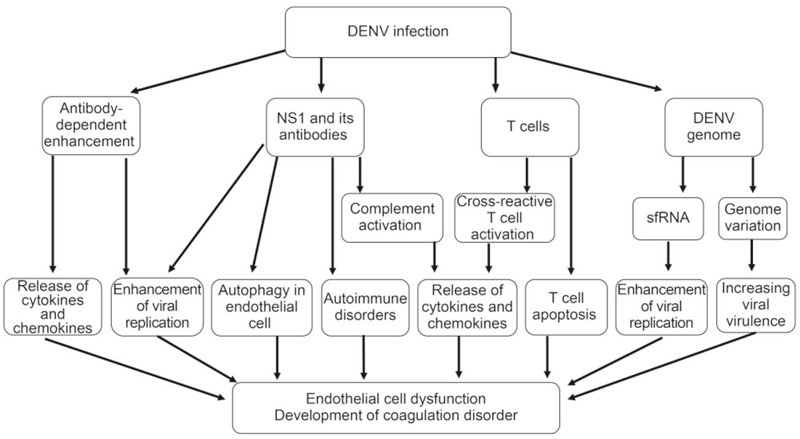
Progress towards understanding the pathogenesis of Dengue Hemorrhagic Fever
2017, 32(1): 16 doi: 10.1007/s12250-016-3855-9
Received: 22 August 2016 Accepted: 12 October 2016 Published: 14 November 2016Dengue virus (DENV) is a mosquito-borne virus belonging to the Flaviviridae family. There are 4 serotypes of DENV that cause human disease through transmission by mosquito vectors. DENV infection results in a broad spectrum of clinical symptoms, ranging from mild fever to dengue hemorrhagic fever (DHF), the latter of which can progress to dengue shock syndrome (DSS) and death. Researchers have made unremitting efforts over the last half-century to understand DHF pathogenesis. DHF is probably caused by multiple factors, such as virus-specific antibodies, viral antigens and host immune responses. This review summarizes the current progress of studies on DHF pathogenesis, which may provide important information for achieving effective control of dengue in the future. -

From the new Editor-in-Chief
2017, 32(1): 1 doi: 10.1007/s12250-017-3963-1
Published: 27 February 2017It is both an honor and pleasure to have been appointed as the Editor-in-Chief of the journal Virologica Sinica from this volume. Professor Xinwen CHEN, who has dedicated to serve the journal as the Editor-in-Chief for 15 years, concluded his term of service in the last volume. I would like to thank Prof.







